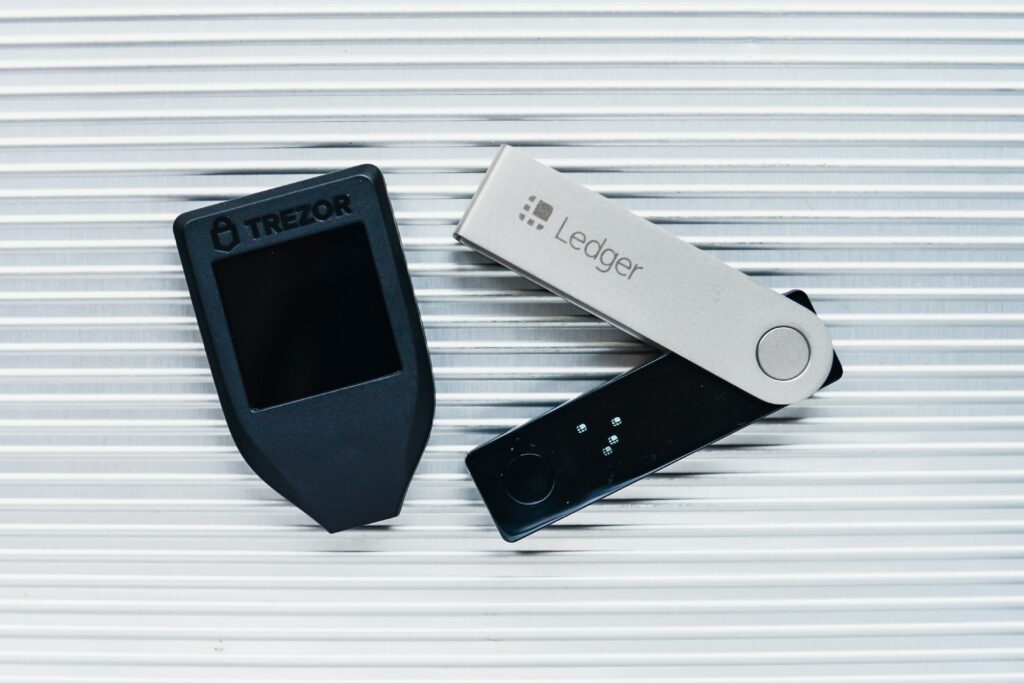How to Keep Your Crypto Safe
Imagine waking up, grabbing your phone, and checking your crypto wallet—only to see that your entire balance is gone. No warning. No customer service to call. No way to reverse the transaction. It happens every single day to people who thought their crypto was secure.
Unlike a traditional bank, where fraudulent transactions can often be reversed, crypto operates on decentralized networks, which means once it’s gone, it’s gone.
That’s the harsh reality of crypto security. The good news? You don’t have to become a cybersecurity expert to protect your assets—you just need to follow a few essential security practices.

Let’s break down how to keep your crypto safe, avoid common scams, and make sure you’re in full control of your digital wealth.
Understanding Crypto Wallets: The Key to Ownership
If you’ve ever held cash in a physical wallet, you understand the basic idea of a crypto wallet—it’s a tool that allows you to store, send, and receive cryptocurrency. But unlike a bank account, where the institution holds your money, a crypto wallet places full control in your hands.
At the core of every crypto wallet is a private key—a long, randomly generated sequence of letters and numbers. Think of it like the key to a safety deposit box: if someone else gets access to it, they can take everything inside. That’s why protecting your private keys is the most important rule in crypto security.
Hot vs. Cold Wallets: Which One Should You Use?
There are two main types of wallets—hot wallets and cold wallets—each with its own advantages and risks.
A hot wallet is always connected to the internet, making it easy to access and trade crypto instantly. If you’ve ever used an exchange like Coinbase, Binance, or Kraken, then you’ve used a hot wallet. They’re convenient but also vulnerable to hacks because they’re constantly online. Many investors make the mistake of leaving large amounts of crypto on exchanges, trusting the platform to keep their funds safe. However, history has shown that even the biggest exchanges aren’t immune to attacks or financial collapse.
On the other hand, cold wallets store crypto completely offline, making them nearly impossible for hackers to access remotely. The most popular cold wallets—hardware wallets like Ledger and Trezor—keep your private keys locked inside a physical device, requiring you to manually approve transactions. While they cost anywhere from $50 to $200, they provide the highest level of security for long-term crypto storage.
So, what’s the best approach? Use a hot wallet for everyday transactions but store your long-term holdings in a cold wallet.
The Biggest Crypto Scams and How to Stay Safe
Crypto’s decentralized nature is a double-edged sword: it gives you complete control over your assets, but it also means there’s no one to bail you out if you get scammed. And scams? They’re everywhere.
One of the most common threats is phishing attacks—scams where hackers pose as crypto exchanges, wallet providers, or even government agencies, tricking users into revealing their login details. It usually starts with an email or message urging immediate action: “Your account has been compromised. Click here to secure your funds.” The moment you enter your credentials, the attacker gains control of your wallet. The best way to avoid phishing? Never click links in unsolicited messages and always access your accounts by typing the official website URL yourself.
Then, there’s the issue of exchange security. If you’ve been in the crypto space long enough, you’ve seen headlines about major platforms being hacked or collapsing overnight. Take FTX, for example—once a multi-billion-dollar exchange, it crumbled in 2022, leaving users with billions in frozen funds. It was a painful reminder that no exchange is too big to fail. That’s why seasoned investors follow a simple rule: never leave more funds on an exchange than you’re willing to lose.
Another scam that continues to fool investors is the “free crypto giveaway.” If you’ve ever seen social media posts claiming that Elon Musk or a major company is giving away crypto, there’s one simple rule: It’s fake. These scams often ask users to send a small amount of crypto to “verify” their address, promising a larger return. Of course, once the crypto is sent, it’s gone forever.
Even within the world of NFTs and DeFi, there’s no shortage of rug pulls and pump-and-dump schemes. A project launches, influencers hype it up, early buyers pump the price—then the developers suddenly sell everything and disappear, leaving investors holding worthless tokens. The key to avoiding these traps is researching the team behind a project and looking for real-world utility instead of just hype.
When it comes to crypto scams, trust your gut—if something feels off, it probably is.
Best Practices for Keeping Your Crypto Safe
If there’s one takeaway from this guide, it’s that your crypto security is in your hands. The good news? Keeping your assets safe doesn’t require a tech background—just a few smart habits.
First, use strong, unique passwords for every exchange or wallet you use. Many people make the mistake of using the same password everywhere, making it easy for hackers to compromise multiple accounts. Using a password manager can help generate and store complex passwords securely.
Another must-have layer of security is two-factor authentication (2FA). This adds an extra step to logins, making it significantly harder for hackers to gain access. However, avoid using SMS-based 2FA, as attackers can steal your phone number through SIM-swapping attacks. Instead, use an authenticator app like Google Authenticator or Authy.
Perhaps the most important habit in crypto security is protecting your private keys and seed phrase. Never store them in a digital format—no screenshots, no cloud backups, and definitely no notes saved on your phone. Write them down on physical paper and store them in a secure place, such as a safe or lockbox. If someone gets access to your seed phrase, they can completely drain your wallet without needing your permission.
And finally, always double-check wallet addresses before making transactions. Since blockchain transactions are irreversible, sending crypto to the wrong address means it’s lost forever. A single typo could be the difference between funding your own wallet or sending your crypto into the abyss.
Final Thoughts: Crypto Security is Your Responsibility
Unlike traditional finance, there’s no safety net in crypto. If your funds are stolen or lost, there’s no one to call for a refund. That might sound intimidating, but it also means that by taking control of your own security, you can ensure that your investments remain safe.
The best part? Crypto security doesn’t have to be complicated. A few smart habits—using a hardware wallet, enabling 2FA, and keeping your private keys offline—can protect your assets better than 99% of crypto holders.
So before you buy more crypto, ask yourself: Is my security strong enough to protect what I already have?
